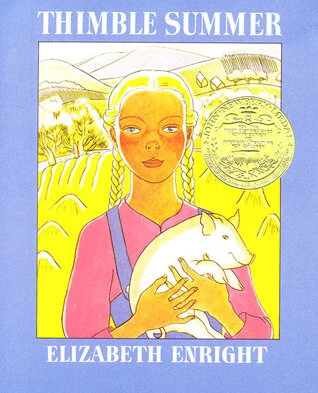Call it Courage (1941)
(Programming note: I’m skipping 1940’s winner, Daniel Boone, as it’s been out of print for decades and is only available at my local library in the reference section. Not to fear, I’ll get to it once libraries are open again!)
The movement for Hawaiian statehood dates back to at least 1919, when Hawaiian chieftain Kuhio Kalanianaole proposed that Congress admit the state after World War I. By the time Hawaii actually became the 50th United State in 1959, the island nation was best known to the American public because of its role in World War II. The gradual acceptance of Hawaii as a potential state rather than a foreign territory can be partially attributed to the passage of time—after years of vacations and TV specials, people on the mainland had a much better sense of this tropical paradise, its people, and pieces of its unique culture. Some of that culture was exported (and/or appropriated) to the mainland, which led to some fabulous art and music that I hold near and dear to my heart.
But the main reason Americans were more aware of Hawaii was what happened on December 7, 1941, when the Japanese Air Force bombed Pearl Harbor. Hawaii’s position halfway between the continental US and Asia made it a strategic military and shipping post, and after Japan’s attack sucked the US into the ongoing World War II, Hawaii took on a renewed import in American consciousness. Sheer coincidence, then, that the book that won the Newbery just a few short months before the attack was an attempt to bring a little island life to mainstream America.
Though written prior to the bombing, Call it Courage is built on the same fascination with Polynesian culture that most Americans would have attributed to the Hawaiian islands. Like many Newbery winners before it, it’s a loose tale about a foreign youth that somewhat exists as an anthropological education for young readers. And like many of those books, Call it Courage is an uncomfortable mix of factual cultural information and potentially problematic stereotyping. But where other winners were just plain offensive or mind-numbingly boring, Call it Courage strikes a balance in its writing, a balance that tips the scales in its favor 80 years later.
Armstrong Sperry was a pro by the time he won the Newbery, though he was more famous as an ad man than a children’s book author. While working for a New York ad agency in the 1920s, one of Sperry’s assignments was to design book covers. Inspired by his own time exploring the South Pacific, Sperry decided to try his hand at writing, mainly focused on ethnographies of island cultures he’d encountered. Unsurprisingly, these early books aren’t exactly flying off the shelves these days, as a contemporary critic points out that his “works for young readers would…today be stigmatized as condescending in their approach.”
Courage doesn’t feel condescending to its characters, though that’s not to say it’s a remarkably enlightened work. (Though main character Mafatu’s culture is rendered inoffensively, a neighboring tribe is depicted as black-skinned cannibals, which is more than a little cringe.) But what makes the book work is its grounding in story. Mafatu is an outsider, unwelcome and made fun of because he’s scared of the ocean and it’s power. As a gay kid who grew up often not feeling masculine enough to get along with other boys my age, I could see myself in Mafatu’s struggles. His main drive—to prove himself worthy of respect and conquer his fears—is something a lot of readers can relate to. And Sperry makes sure that the anthropological detail he dresses his story with is purely window dressing, never overriding the narrative.
Another strength of the book is its brevity. By the end of the 1930s, there was a marked shift in the length of Newbery winners, and Call it Courage falls into the same about-100-pages range of The White Stag and Thimble Summer. Sperry doesn’t waste a single page in his book, finding space for color (there are some beautiful passages describing the reef) while communicating a story that feels totally complete without stretching it to its breaking point. The pacing is paramount given that most of the book is about someone stranded on a deserted island, and Sperry pulls it off gracefully.
After the miserable Portland winter, it was nice to take a trip to Polynesia for an afternoon. Call it Courage is the kid lit version of a beach read, both literally and metaphorically, and it mostly lives up to what it was trying to achieve 80 years ago.



